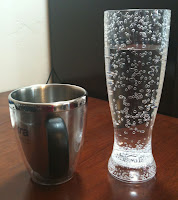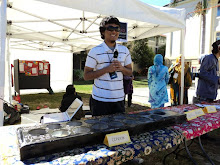Many children can parrot the words 'one', 'two', 'three', 'four', 'five' etc. However, rarely do they understand that the number refers to an item or a set of items. At this stage, children do not have 'number conservation'. Normally children enjoy making comparison using words such as 'more than', 'bigger than' or 'higher than'. In addition, we often observe their misconception.
For example, they always think that they have 'more water' if their glass is higher than others.
How Do We Clarify Their Misconception?
Get the children involved with activities that promote matching, sorting, ordering and patterning using objects around them.
Matching get them to match one object to another object of the same numbers. For example, match their pencil with counters. If they have five pencils, they will need five counters. This activity will get them to use counting skills (even though they have not acquired the skills).
Sorting get them to classify many objects into several group of the same attributes. The meaning of 'sort' is 'to put into groups'. The groups can be varied. For example, attributes of color, attribute of shape, attributes of size, etc. Teacher can use the students themselves, for instance. Ask the students to sort themselves into groups of height, month of birth, size or gender.
Ordering involves arranging objects from first to last according to certain attributes the same as the attributes in sorting activities. For example, ordering students' book from big to small, ordering the students from tall to short, etc. Obviously, teachers can bring any objects into classroom for the students to order such as counters, marbles, stones, etc.
Patterning to arrange objects in some forms of regularity. Again, attributes of the objects are used to patterning. The pattern can be represented by alphabet like rhymes such as ABCABCABCABC, DYDYDYDYDY, FEEDFEEDFEEDFEED, etc.
* * *
Tips For Teachers:
1) It is important for teachers to clarify children's misconception about numbers, values and measurement before it becomes their beliefs.
2) It is interesting to use things or objects around them, or even the students themselves, in conducting matching, sorting, ordering and patterning activities. However, teacher should be aware of sensitive issue such as weight and height.
3) The teachers should first recognize what the chidren perceive about numbers, values and measurement. This is important as to know to which extent the children are misunderstood.


0 comments:
Post a Comment